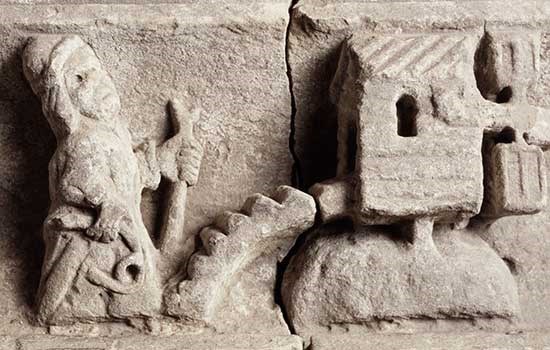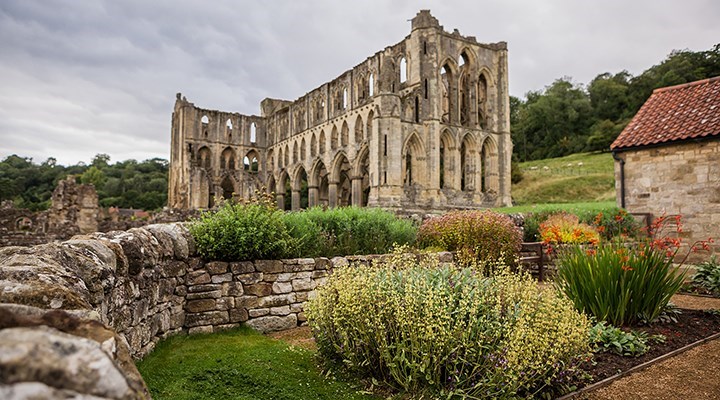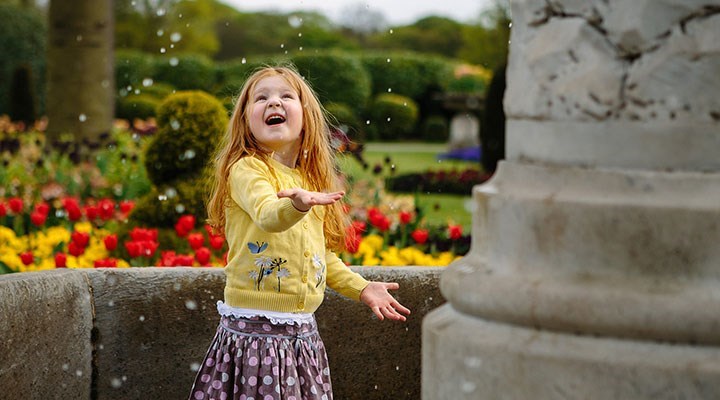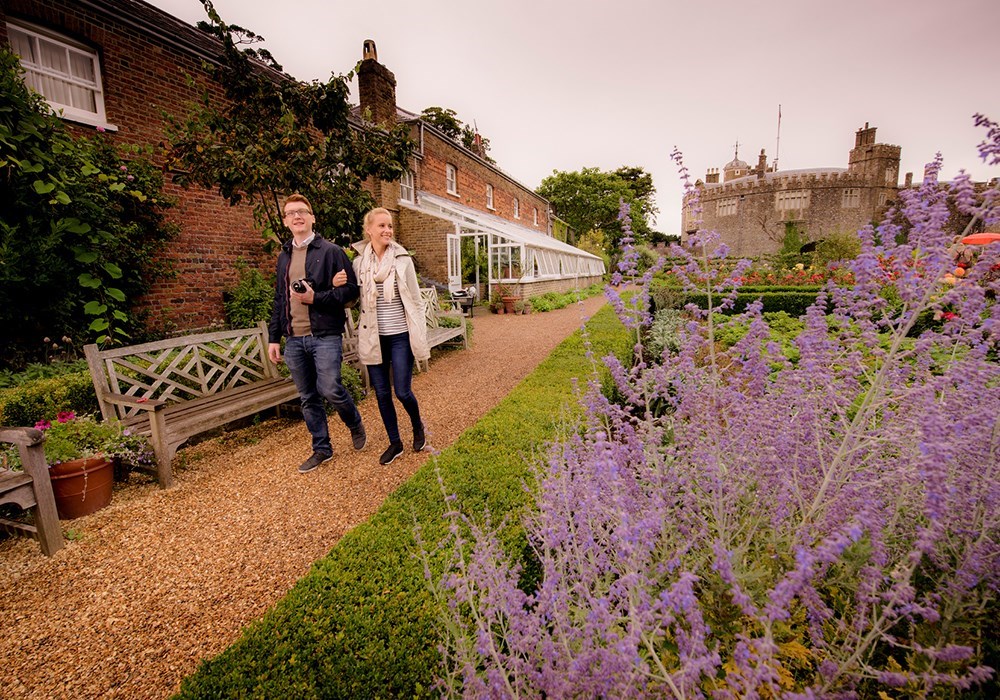Why We Love Rievaulx
"It's a place of quiet and solitude in an atmospheric setting. I've been coming here for at least 40 years and it is magical every time." John Wilson, English Heritage Member.
"Pictures don't quite capture the soaring height of the ruins and the sense of space that you get at Rievaulx - it's been a real highlight of our visit to Yorkshire." Jennifer Black, Visitor to Rievaulx.
"I've found the tranquillity, the serenity and the spirituality of the site to be special. I am amazed at the ingenuity and the skill of the people who built Rievaulx Abbey. People come here for the peace and the serenity. It is a beautiful place in a beautiful part of Yorkshire." Gavin Smithies, former Site Manager at Rievaulx.
Plan your visitTake a Closer Look
The intricate stone carvings from Rievaulx give us a glimpse into the painstaking effort the monks put into building an abbey that was not only practical but also beautiful.
The friezes, faces and sculptures have survived for centuries, but they need careful conservation to preserve them for future generations.
Take a look at how these precious artefacts are cleaned and cared for before being put on display.
Conservation at RievaulxWhat Makes Rievaulx Abbey Special?
Rievaulx Abbey's rise and decline also tells the story of piety, monastic wealth and religious upheaval which gripped England.
The Cistercian monks at Rievaulx initially criticised the slackness of other orders, and followed a very strict timetable and code of conduct. However, as the centuries passed it seems that they became less rigourous.
From its heyday under Abbot Aelred in the 12th century, when 140 monks and around 500 lay brothers lived at Rievaulx. By the time Rievaulx was supressed in 1538 it was reported to have only 22 monks - supported by 102 paid servants.
Then and now
3 things to look out for...
- Count the 27 windows in the refectory
The refectory was where the monks ate their dinner. Inside it would have been brighter and more finely decorated the church, as you can see on the reconstructed drawing above on the left. Traces of paint have shown that the room was painted pale pink, and the mouldings of the wall arcades were painted red - on the right is what you can see today.
- The place where the monks had their feet washed
You can see the remains of a raised bench in the laver (next to the refectory) where every Saturday the monks would sit and let the Abbot wash their feet. This was to emulate Christ washing the feet of his Disciples.
- A very unusual buried treasure in the museum
It might not look like treasure, but lead is very valuable. When Rievaulx was Dissolved, the lead from the stained glass windows, pipes and gutters were melted down and cast into ingots called 'fothers'. These were mostly taken away to add to the King's Treasury, but you can see one in the visitor centre which was buried at the west end of the nave when part of the building collapsed.
Stay At Rievaulx
Enjoy the tranquility of Rievaulx for longer by staying at the Refectory holiday cottage.
Sitting just beside the abbey grounds, the cottage has been completely renovated, giving you the chance to enjoy Rievaulx, Helmsley and the surrounding countryside.
See more-

Rievaulx Abbey Collection
From intricate floor tiles to carved chess pieces, explore a selection of objects that give a unique insight into the workings of the medieval abbey.
-

What to grow in a Medieval herb garden?
Medieval medicine relied on herbs and plants. Here are nine plants that you’d find in an infirmary garden which you can still grow in your own garden today.
-

Yorkshire: Things to do on a rainy day
Our top picks of things to do on a rainy day in Yorkshire - from a nuclear bunker to a Victorian family home.
-

Join us as a member this summer
Our Members get unlimted access to over 400 historic places as well as free entry for up to 6 children aged under 19 years from within your family group.

